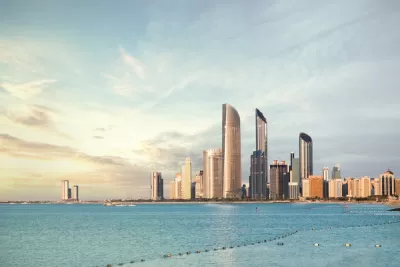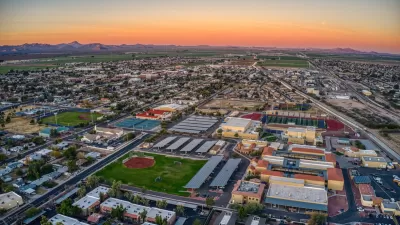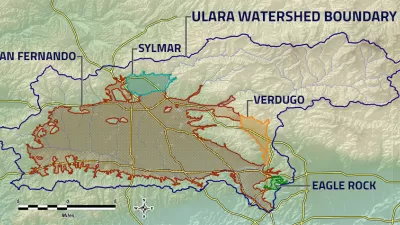The UAE has created a storage facility under the desert that can provide up to 100 million liters per day in the event of an emergency.

From the 2018 International Water Summit in Abu Dhabi, Akshat Rathi reports that underneath the desert, far from the desalination plants, there is now a very prudent reserve of 26 billion liters of water available for the United Arab Emirates in a crisis. Like many of the projects funded by the massive oil wealth of the UAE, it is an impressive feat of engineering.
“The desalinated water is transported through large pipes (about 1 meter in diameter), which had to be pieced together in the desert through high-precision welding to make them leak-proof for at least 50 years. The water is then dumped about 80 meters underground through perforated pipes, where it seeps deeper into the aquifer. There are about 300 wells to recharge, recover, and observe the aquifer’s water.”
Despite its arid climate, the UAE has one of the highest rates of per capita water consumption in the world; as a result of its arid climate, it is particularly vulnerable to climate change. It was the potential impact of climate change that inspired the reserve.
The project is likely to draw a great deal of interest, but the expense makes it of limited use to the rest of the world. Even in the United States, officials tend to balk at just the cost of desalination, let alone the cost of moving and storing the water underground. And the U.S. is in better financial shape than many of the world’s more arid nations.
“For most others facing water scarcity,” Rathi writes, “there’s no oil money to help.”
FULL STORY: The UAE has built the world’s largest desalinated water reserve—under a desert

Planetizen Federal Action Tracker
A weekly monitor of how Trump’s orders and actions are impacting planners and planning in America.

Chicago’s Ghost Rails
Just beneath the surface of the modern city lie the remnants of its expansive early 20th-century streetcar system.

San Antonio and Austin are Fusing Into one Massive Megaregion
The region spanning the two central Texas cities is growing fast, posing challenges for local infrastructure and water supplies.

Since Zion's Shuttles Went Electric “The Smog is Gone”
Visitors to Zion National Park can enjoy the canyon via the nation’s first fully electric park shuttle system.

Trump Distributing DOT Safety Funds at 1/10 Rate of Biden
Funds for Safe Streets and other transportation safety and equity programs are being held up by administrative reviews and conflicts with the Trump administration’s priorities.

German Cities Subsidize Taxis for Women Amid Wave of Violence
Free or low-cost taxi rides can help women navigate cities more safely, but critics say the programs don't address the root causes of violence against women.
Urban Design for Planners 1: Software Tools
This six-course series explores essential urban design concepts using open source software and equips planners with the tools they need to participate fully in the urban design process.
Planning for Universal Design
Learn the tools for implementing Universal Design in planning regulations.
planning NEXT
Appalachian Highlands Housing Partners
Mpact (founded as Rail~Volution)
City of Camden Redevelopment Agency
City of Astoria
City of Portland
City of Laramie





























